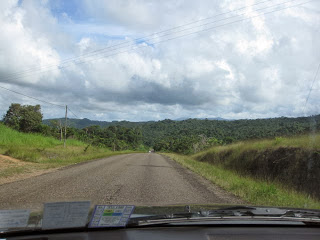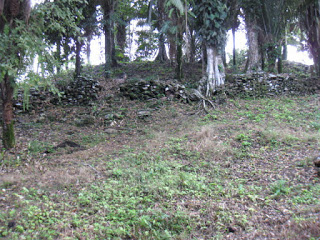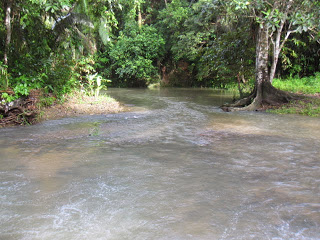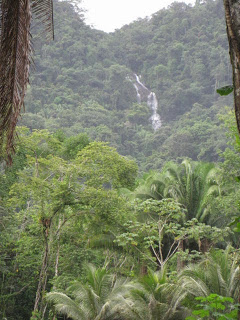
I’ve now posted reviews of everything significant we did in Belize, so I thought I’d end with a “recap” post. I’ll quickly go through what we saw, what we wish we had seen, and some quick tips if my series has convinced you to add a vacation in Belize to your life’s to-do list.
What We Saw
First, a quick set of links to the other stories in my Belize travel series:
- Jaguar Reef Lodge Resort – the hotel we stayed at in Hopkins village.
- Hopkins and Dangriga – including Hopkins village and Dangriga town, Gulisi Garifuna Museum, and Billy Barquedier National Park.
- Cockscomb Basin Wildlife Sanctuary and Jaguar Reserve – the, um, jaguar reserve, the main reason I wanted to come to Belize.
- Altun Ha Mayan Ruins – the closest Mayan ruins to Belize City.
- Cahal Pech Mayan Ruins – Mayan ruins in the western part of the country.
- Restaurants of Hopkins – including Innies’ Restaurant, Iris’ Sunnyside Up, and the restaurant at the Jaguar Reef.
Other Places we Saw
We did spend time at a couple of other places that I didn’t collect enough information or photos on to write reviews. Here’s a brief overview of those:
Mayflower Bocawina National Park – located approximately 10 miles from Dangriga, at Mile Marker 6 of the Southern Highway. The park contains several sets of unexcavated Mayan ruins, a couple of waterfalls, and several miles of hiking trails (mostly easy, a couple of difficult ones). I did manage a couple of photos despite the poor weather.
The weather and fading daylight prevented us from spending more time here, but the park is worth a visit if you’re in the area.
The Orange Gallery – a hotel, restaurant, and gift shop at Mile 60 of the Western Highway, about halfway between Belmopan and San Ignacio. You’ll see the signs for miles in every direction on both the Western and Hummingbird Highways. It screams tourist trap, and as you would suspect, they want to sell you jewelry, but the restaurant was pretty good, and makes an ideal stop for breakfast/lunch if you’re headed to the San Ignacio area.
Restaurant at the Belize City airport – if you don’t have time to grab a meal elsewhere before heading back to the airport for your flight home, there is a small restaurant on the top floor of the airport called the “Sun Garden Restaurant”. They serve a surprisingly good stew chicken, but more than that, one of the finest mayonnaise potato salads I’ve ever had. It’s expensive, as you would expect for an airport restaurant, but if you’re in a rush, you could do far worse.
What We Wish We Had Seen
Time constraints and bad weather conspired to keep us from doing everything we wanted to do (then again, isn’t that true of every vacation, though?). Here’s a short list of places we wish we had been able to visit.
Xunantunich – located a few miles west of San Ignacio, just short of the Guatemala border. many regard Xunantunich as the best Mayan ruins in Belize, and you have the unique pleasure of taking your car across a hand-cranked ferry to access the site. Unfortunately, the site was closed due to river flooding the day we went to visit. Cahal Pech isn’t a bad second choice if you run into the same problem.
St. Herman’s Blue Hole National Park – located about half an hour outside of Belmopan on the Hummingbird Highway. Contains a swimming hole featuring stunning azure blue water and a cave to explore. We passed by on our first day in Belize, a beautiful sunny day, but decided not to stop as we planned to stop by on our way back from San Ignacio a couple of days later. We were foiled, though, as the park was closed due to flooding in the area. NOTE: do not confuse this park with “The Blue Hole”, which is a reef off the coast known for snorkeling and scuba diving.
Mountain Pine Ridge Forest Reserve – located a couple of hours outside of San Ignacio on a rough, winding gravel/dirt road. I’d heard from probably a half a dozen locals that this was a must-see area, with several spectacular waterfalls and mountain views, along with the Caracol Mayan ruins. You really need two days just in San Ignacio to have time to make it to the Mountain Pine Ridge, which we didn’t have on this trip.
Tips for Visiting
The first thing I’d think about if you decide to visit Belize is whether to rent a car or not. We did rent a car, and were glad we did. While gas in Belize is expensive, having a vehicle gives you the freedom to visit the country’s national parks and archaeological sites on your own schedule, and if done properly, you can save a ton of money on tour fees. For example, a tour to the jaguar reserve from our hotel would have run $75/person, but if you drive yourself, the entrance fee is only $5/person. If you do rent a car, pay the extra money and rent a 4WD. Many of the access roads to the parks and archaeological sites are rough and unpaved, and 4WD will make the drive much, much easier.
I roughly divide Belize into three zones: the north (Belize City/Altun Ha/Orange Walk/Ambergris Caye), central (Belmopan/San Ignacio/Mountain Pine Ridge), and the south (Dangriga/Hopkins/Cockscomb Basin/Placencia/Punta Gorda). We spent 4 days in Belize, which truthfully, is enough time to enjoy one of the zones. If you want to mix and match between them, you really need at least a week. The reason being, while Belize is a small country, since you’re traveling on 2-lane country roads, it takes a while to get from one area to another.
Finally, as to when to visit Belize, the country has two season: the wet season (June through mid-November) and the dry (mid-November through May). You’ll notice the wet season roughly correlates to hurricane season. You’ll enjoy smaller crowds and more personal service and experiences during the wet season, and frankly, I enjoy seeing the tropical rain forest when it’s actually raining, but services are also more limited, and you run the risk of having sites shut down due to bad weather or flooding. On the other hand, crowds are much heavier during the dry season, which means prices are higher, too. What you prefer depends on your personal preference, but one thing I heard from multiple locals was to avoid the country in September. Many hotels and restaurants, especially along the coast, are shut down for much of the month.





